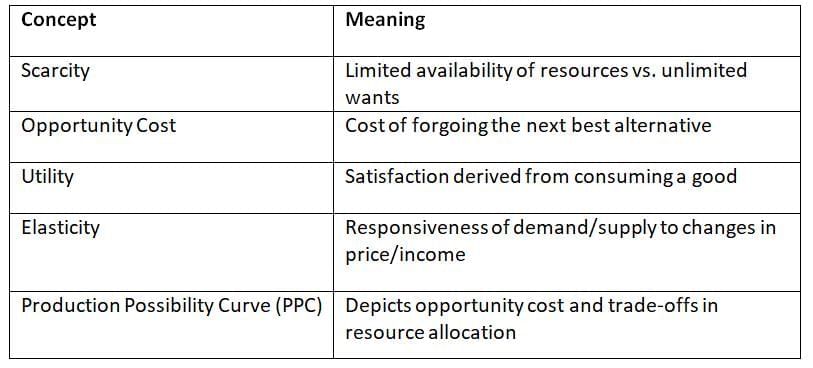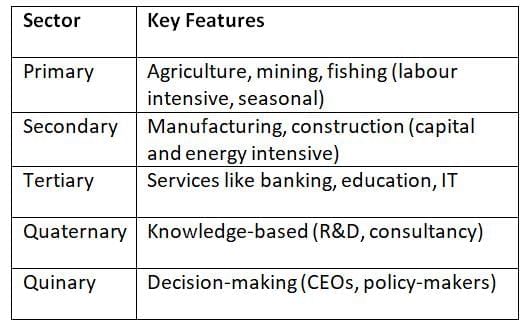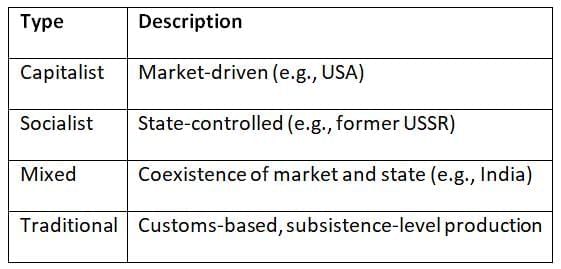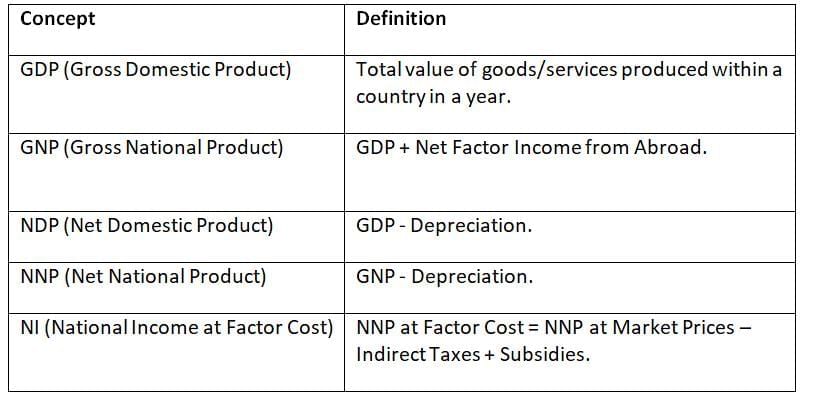UPSC Exam > UPSC Notes > Indian Economy for UPSC CSE > Cheat Sheet: Introduction to Economics & Indian Economy
Cheat Sheet: Introduction to Economics & Indian Economy | Indian Economy for UPSC CSE PDF Download
Definition and Scope of Economics
- Economics: Study of how individuals, businesses, and governments allocate scarce resources to satisfy unlimited wants.
- Classical Definition (Adam Smith): Wealth-centric.
- Modern Definition (Lionel Robbins): Human behavior as a relationship between ends and scarce means.
- Amartya Sen: Development as freedom—focus on capabilities, not just income.
Scope:
- Allocation of resources, production, distribution, consumption.
- Includes both microeconomics (individual units) and macroeconomics (aggregates like inflation, GDP).
Basic Concepts

Role of the State in an Economy
- Regulator: Controls monopolies, maintains competition.
- Producer: Via PSUs and infrastructure investments.
- Redistributor: Through taxes and welfare schemes.
- Stabilizer: Monetary and fiscal policies to manage inflation, unemployment.
- Facilitator: Ease of doing business, legal frameworks.
Indian context: From command economy (1950s) to liberalization (1991), now moving toward facilitative state with initiatives like PM Gati Shakti, PLI scheme, Digital India.
Sectors of the Economy

- In India: Services > Industry > Agriculture (in terms of GDP share)
Types of Economies

Idea of National Income

Measured via three approaches: Production, Income, Expenditure
Cost and Price of National Income
- Factor Cost: Income earned by factors of production (excludes taxes, includes subsidies).
- Market Price: Final price paid by consumers (includes taxes, excludes subsidies).
Comparing GDP and GVA

Since 2015, India uses GVA at basic prices for sectoral growth & GDP at market prices for national growth.
Characteristics of the Indian Economy
- Mixed Economy: Coexistence of public & private sectors.
- Developing Economy: Low per capita income, high population growth.
- Agriculture Dominant (employment), Services Dominant (GDP).
- Dualism: Urban–rural, formal–informal, rich–poor divides.
- High demographic potential but facing unemployment and skill mismatch.
- Large informal sector, but increasing formalization through GST, UPI, JAM trinity.
The document Cheat Sheet: Introduction to Economics & Indian Economy | Indian Economy for UPSC CSE is a part of the UPSC Course Indian Economy for UPSC CSE.
All you need of UPSC at this link: UPSC
|
108 videos|425 docs|128 tests
|
FAQs on Cheat Sheet: Introduction to Economics & Indian Economy - Indian Economy for UPSC CSE
| 1. What is the role of the state in an economy? |  |
Ans. The state plays a crucial role in an economy by regulating and guiding economic activities. It establishes laws and policies to ensure fair competition, protects property rights, and provides public goods and services. The state also intervenes in cases of market failures, redistributes income to reduce inequalities, and stabilizes the economy through fiscal and monetary policies.
| 2. What are the main sectors of the economy? |  |
Ans. The economy is typically divided into three main sectors: the primary, secondary, and tertiary sectors. The primary sector involves the extraction of natural resources (e.g., agriculture, mining). The secondary sector focuses on manufacturing and industrial activities (e.g., construction, production). The tertiary sector encompasses services (e.g., healthcare, education, retail) that support the other two sectors and contribute to economic growth.
| 3. How do GDP and GVA compare? |  |
Ans. Gross Domestic Product (GDP) measures the total value of all goods and services produced in a country over a specific period, while Gross Value Added (GVA) represents the value of goods and services produced in an economy, minus the cost of goods and services used in production. The main difference is that GDP includes taxes and excludes subsidies on products, while GVA is more focused on the value generated by specific sectors, making it a useful measure for understanding sectoral contributions to the economy.
| 4. What is national income, and why is it important? |  |
Ans. National income refers to the total monetary value of all goods and services produced within a country in a given timeframe, typically calculated annually. It is important as it serves as an indicator of a country's economic health, helps in formulating economic policies, and provides insights into living standards and economic performance. National income also aids in international comparisons of economic strength.
| 5. What are the characteristics of the Indian economy? |  |
Ans. The Indian economy is characterized by its mixed nature, combining elements of both capitalism and socialism. It has a large agricultural base, a growing industrial sector, and a rapidly expanding service sector. Other features include a significant informal economy, demographic diversity, and regional disparities in economic development. Additionally, India faces challenges like poverty, unemployment, and infrastructural deficits, while also benefiting from a young population and a burgeoning middle class.
Related Searches





















